-
Posts
494 -
Joined
-
Last visited
Content Type
Profiles
Forums
Events
Shop
Articles
Posts posted by Ben Jamin
-
-
I normally leave my amp generally 'flat' - the pre-amp on my G&L is pretty versatile so I just do most of my adjustments with that and with my playing style - better to get it right at the source I reckon!

-
[quote name='CHW' timestamp='1391025974' post='2352466']
Best sound I've heard in a sports hall was the levellers, basically the walls were completely draped in fabric. Is this even remotely possible for you?
[/quote]
I wish! It works though really well though - played a festival in a big cow shed - the team outfitted the whole place in a thick heavy DIY starcloth, looked pretty cool too. Takes some effort to put up though and some pretty big steps on wheels!
[quote name='51m0n' timestamp='1391026319' post='2352472']
You are screwed unless its entirely packed with meat acoustic absorbtion (ie an audience)
Even then the R60 on that space will be huge, vary massively with different frequencies and there is likely to be unpleasant resonance with any bass from something in the room (sports equiptment, ducting, the ceiling) depending on the construction.
Keep as quiet as possible and accept the fact that the audience are going to experience your band down a well..
[/quote]
Cheers, here's hoping it'll be well attended! We're not expecting a good sound but hopefully we can make it reasonable
[quote name='essexbasscat' timestamp='1391026362' post='2352474']
I'd be tempted to print the above post off and show it to the band, as a means of seeking everyone's understanding and agreement to keep the volume down
Oh, also have a 31 band graphic with feedback detectors to hand
Best of British
[/quote]
Thinking of just sending them all the URL to this thread haha. Hopefully we'll be taking a digital desk so we can high-pass and take out offending frequencies pretty efficiently
-
[quote name='Lozz196' timestamp='1391017663' post='2352346']
Hmmm, watch lows - all instruments, and get anyone with reverb/delay/modulation, unless it`s an essential part of the sound to switch it off. Drums, maybe tune them up a bit higher than usual, and on the pa for vox again, drop reverb and get the depth by using mids not lows. Get all amps off of the floor.
[/quote]
It's going to be one of those rare instances where vocalists ask for LESS reverb haha Looks like I'll be high-passing everything! Getting amps off the floor is a good shout - could borrow a couple of X-frame keyboard stands; maybe some DIY gramma pads?
Looks like I'll be high-passing everything! Getting amps off the floor is a good shout - could borrow a couple of X-frame keyboard stands; maybe some DIY gramma pads?
[quote name='deepbass5' timestamp='1391018228' post='2352357']
One trick I read and have successfully applied is reducing the number sound sources that are being reflected or reduce the chance of them being reflected. Sounds crazy but by putting both PA speakers together on one side of the stage works wonders. The other would be use a bigger PA and not use individual amps on the back line and use monitors. As I guess you are stuck with what is listed the main thing is keep the volume under control, don't push the hall beyond that point of intelligibility. Another - you could avoid facing the opposite wall, set up in the corner so the sound is going round the angles. Good luck
[/quote]
Those are some neat ideas, thanks! We should have the afternoon to set-up so we can try out some different speaker arrangements.
[quote name='leschirons' timestamp='1391023609' post='2352428']
Good luck with that.. that...that...that....that....that.....
[/quote]

-
Next weekend's venue might be fun! Just wondered if anyone knew any tricks to make it sound good/alright/not completely awful as I'm rubbish at acoustics and all that! It's a full on sports hall - big high ceiling and sports hall floor etc. We haven't got any subs for the FOH, just running two QSC K10 speakers, so the bass will just be coming from my Barefaced Compact. There's also an acoustic drum kit!
Is there anything I can do to make us sound less reverby/boomy?
Cheers!
-
Very specific!

D'you mean that staccato (short punchy notes) kind of playing with ghost notes and such? I'd try playing a bit nearer the bridge where there's more tension in the string and muting the note with either your other plucking finger or left hand after only letting it ring for a very short time. Muting notes slightly with your left hand for that percussive ghost note can sound funky but it can ruin a band mix if you over-do it! -
I haven't tried any of their basses, but the guitarist in my band has a Double Agent and it rocks. Very well put together, plays very well, sounds great, looks cool. Can't argue

A previous guitarist had a Warhawk and it was the same story there.
Reverend have an excellent reputation for good reason. -
Well I tried keeping it for a while but I just can't justify it! Someone needs to give it the use it deserves, poor thing.
-
[quote name='Bassman Sam' timestamp='1379798638' post='2216957']
Very true but G&L don't have a Fender logo on the headstock. That will make the difference to a lot of bassists.
[/quote]
True. Funny thing is the G&L's more of a (Leo) Fender than the Dimension is! -
Hang on... two humbuckers and an 18v pre-amp with a 3 band EQ?
Surely the HH model is literally just a G&L M2000/M2500? You could probably pick a G&L Tribute M2000 for half the price of the American Deluxe and I imagine it'd be just as good, if not better. And then you've got the USA-made G&Ls... -
So infinite sustain that you can swell in and out?
You could get an e-bow and just use your volume pedal?
-
Here's a bit of G&L and mood lighting from last week.

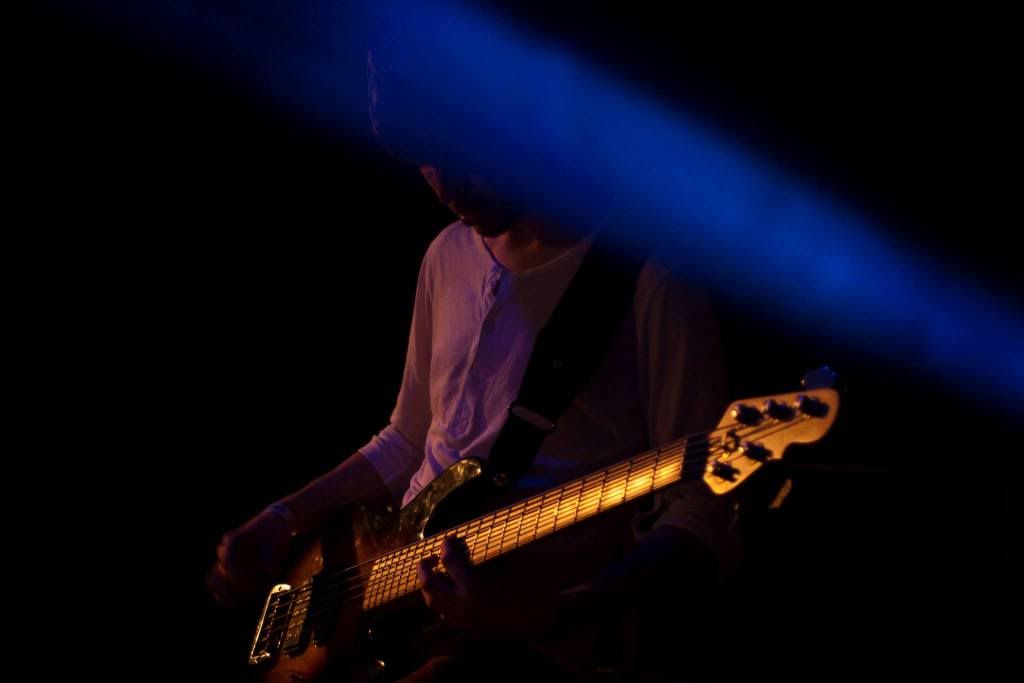
-
-
[quote name='ezbass' timestamp='1376550483' post='2175687']
Now that's a good proper, stream of consciousness, rant. Nice
[/quote]
 Glad to be of service
Glad to be of service 
It was a long day in the office! -
Squier. Because deep down it's not a Fender.
Fender. Because everyone has one.
Stingrays. That cool hip Fender-alternative that... everyone has. And everyone expects you to play RHCP.
Those GruvGear FretWraps and similar mute things that go up by the nut. An early warning of incoming incessant bass soloing.
Chorus on bass. Why?
People who say: "this bass was 'born' on...". No it wasn't. Your Fodera did not emerge from a pregnant woman.
Keyboard players.
Vocalists complaining about this week's cold/flu/virus/sore throat.
People who wear sunglasses inside on-stage.
Guitarists who run two amps in 'stereo'. No-one cares.
PRS guitars.
Ibanez. Association with silly excessive guitar solos.
Musicians who ask for "just me and the lead vocal" in their in-ear monitors.
Lists. -
-

[font=arial,helvetica,sans-serif][size=4]Reluctant sale as I need to raise funds for a festival (boring things like amp covers/cases etc) and whilst this pedal sounds amazing the band I bought it for has ceased to exist, so it's been unloved for a few months now - really it should go to someone who'll make better use of it! Hand-made by David Hall Amps in the UK - here's what they have to say (from their website):[/size][/font]
[i]"The VT1-Bass-Drive uses a single 12AX7 (ECC83) valve to generate classic pure valve tones.[/i]
[i]The VT1-Bass-Drive is a low to medium gain effect and is intended to be used in front of a valve amplifier, but will also work well with solid state amps. The foot switch provides a true by-pass and the blue LED back-light indicates if the effect is on or off.[/i]
[i]There is an extra i/p pad pot on the back of the pedal on the bass version which is useful when dealing with active and passive bass signal levels. The controls are very simple, i/p pad (bass only), Level, Gain, Colour level, 3 position Colour select switch and a bright switch.[/i]
[i]Level sets the output level of the effect to your amplifier, there is a fair amount of gain generated by the valve and op-amp and this will overdrive the input of your amplifier.[/i]
[i]Gain sets the level into the second stage of the valve and hence the level of gain. Use your volume control or on your guitar and/or the i/p pad on the bass version to control the gain on the first stage of the valve, you will find that the VT1-Bass-Drive responses very well to this and you can control the break-up distortion like this.[/i]
[i]The 3 position Colour select switch is used to select Colour 1, 2 or non which is the centre position. When Colour 1 or 2 is selected negative feedback is introduced into the circuit the level of which is adjusted with the Colour pot. The Colour effect is best heard at high gain which is an increase in distortion and compression."[/i]
Comes with the 12V power supply and is in great condition other than the knob for the i/p pad on the back which has fallen off and got itself lost - doesn't affect the pedal's function at all but I will include a replacement.
These retail for £119 - I'll do[b] £60 posted[/b]?
Cheers!
Ben -
[quote name='Bolo' timestamp='1374618438' post='2151099']
Sennheiser HD25 - 1 make a decent choice.
[/quote]
+1 -
[quote name='Lowender' timestamp='1374018841' post='2144406']
I think we have a semantics problem here. What are you calling frequencies? Two basses can be playing the same note with the same EQ (same frequency curve) and sound completely different., If the bass has an inherent "frequency difference" then it would be a matter of adding or subtracting frequencies but that's never the case. Tone is also in the wood and the electronics, even the shape of the bass will be a factor. You can call it ALL frequencies but that's misleading IMO.
[/quote]
It's sound, so ultimately it's all just frequencies. But not everything can be changed with a graphic equalizer. The difference between bass-specific sounds is definitely down to the construction and hardware/electronics/strings/musician - all of which produce different overtones aside from the fundamental frequency. No instrument (other than a synthesizer) can produce just a fundamental frequency - every instrument has it's different overtones which give it it's own 'voice'. Hence flutes sound different to violins. You've got to factor in waveform, attack, decay, sustain and all that stuff too - EQ can't do much to change that. -
I think tone is just balance of the output of frequencies, the keyword being balance. To get the best 'tone' you've got to look at the context of what you're playing - it all depends on what you're trying to achieve with your part. Are you underpinning the harmony of a dense mix of instruments with simple but solid low-end (some kind of rock or dub?) or are you playing more melodic lines with movement that needs more clarity and note definition (maybe a small jazz band). You want your part to be effective without getting in the way of other parts. A bass tone that sounds great on it's own can often just muddy up a mix by clashing with the frequency balances/'tone' of the other instruments, or fail to output enough in a certain frequency range to fill the gap required. Sometimes other musicians are at fault for not leaving enough room for your part - classic examples being guitarists who have too much low mid/bass in their overdriven tones (sounds great by itself for sure) and keyboard players who just love their big thick pads and make full use of the low end of their 88 keys (again, probably sounds great by itself) So for me context is the most important thing in achieving the balance.
In terms of practically achieving the right tone, I think technique makes a big difference (the whole 'it's in the fingers' thing) in terms of the getting the right attack/decay/sustain and harmonic content etc. In terms of bass playing the main variables are probably where you hit the string and with what part of your finger/thumb/plectrum/nail/toe/whatever and with what force. Which string you use makes a difference too - an E sounds different on the A string than it does on the D or E - on some basses this is more pronounced than others, depending on the instruments' construction and what type of strings you're using and ultimately how balanced the tension is. Different instruments will lean towards different harmonic content because of their construction and critically their electronics/pick-up placement (which is why a Precision will always sound like a Precision, a Jazz like a Jazz etc). Get it right there, and then move onto EQ/compression. Carve out their frequencies that you don't need/interfere with other parts and emphasize frequencies that help you achieve what you want from your part. Compression for bass isn't a necessity if you're technique's fine but it can help emphasize different parts of your playing and shift the harmonic content around a bit (it's a good way to engineer a punchy kick drum sound, for example)
Ultimately though, it's all up to the guy at the back of the venue/in the studio who sits behind this, so being nice to these people can really help with your tone

-
[quote name='BigRedX' timestamp='1373566801' post='2139165']
[url=http://www.framus-vintage.de/modules/modells/instruments.php?modellID=60&katID=4621&cl=EN]Framus Junior 4[/url].
[/quote]
That was quick!
Cheers! Didn't know they had a vintage archive, that's a neat idea
-
My Dad's been looking to take up bass for a while now and yesterday he showed me this bass - he'd been given it by a local church he works for - it'd just been sitting in storage for years. It was covered in bits of white paint and general grime/dust and I didn't think much of it until I plugged it in and it sounded/played pretty good! Then I noticed it was a Framus (or claims to be) with 'made in West Germany' stamped on the neckplate. Got a bit excited and naturally offloaded all my Framus/Warwick historical knowledge in true geeky Basschat fashion, which didn't mean much to my Dad. Or anyone really. Anyway I gave it a good clean - the truss rod needs a little tweak and it could with some new strings, but everything works great - every fret is good and the intonation is all good. The pick-up sounds really nice.
I just can't find any info on it - all the other shortscale Framus' I can find on the web seem to be semi-hollow and pretty different! Just wondered if anyone could shed some light as to what this bass is?
Cheers!
Ben
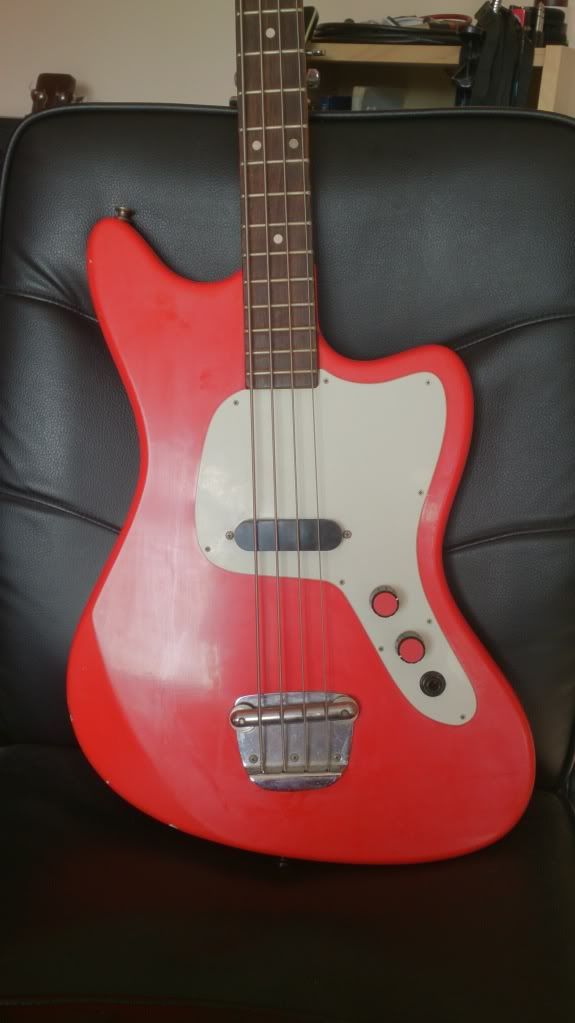
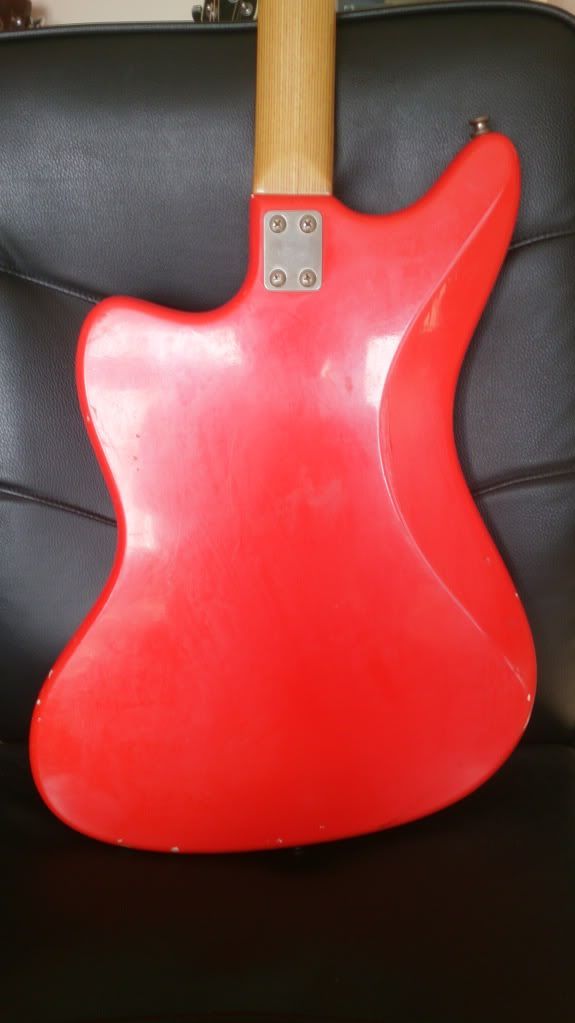
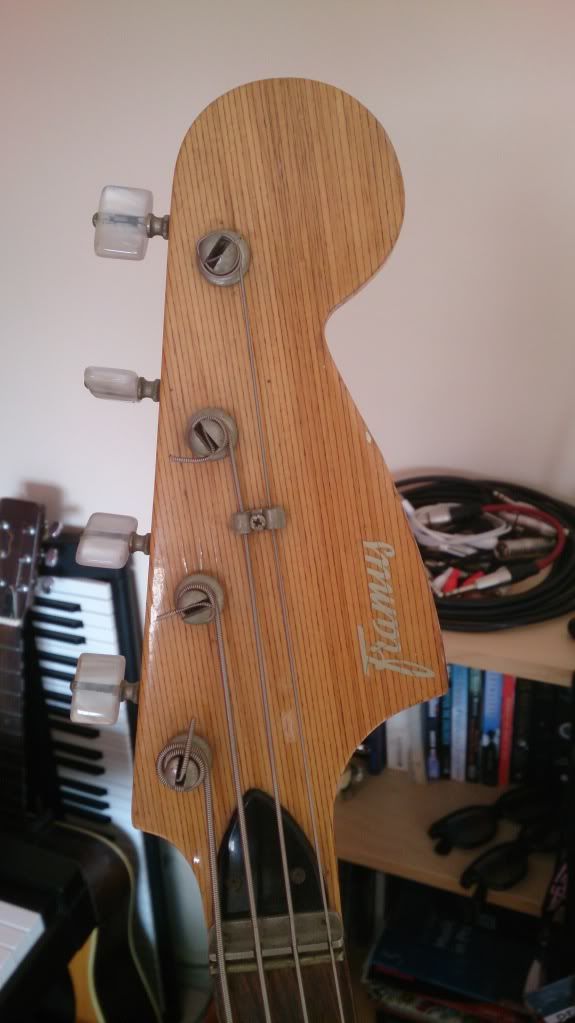
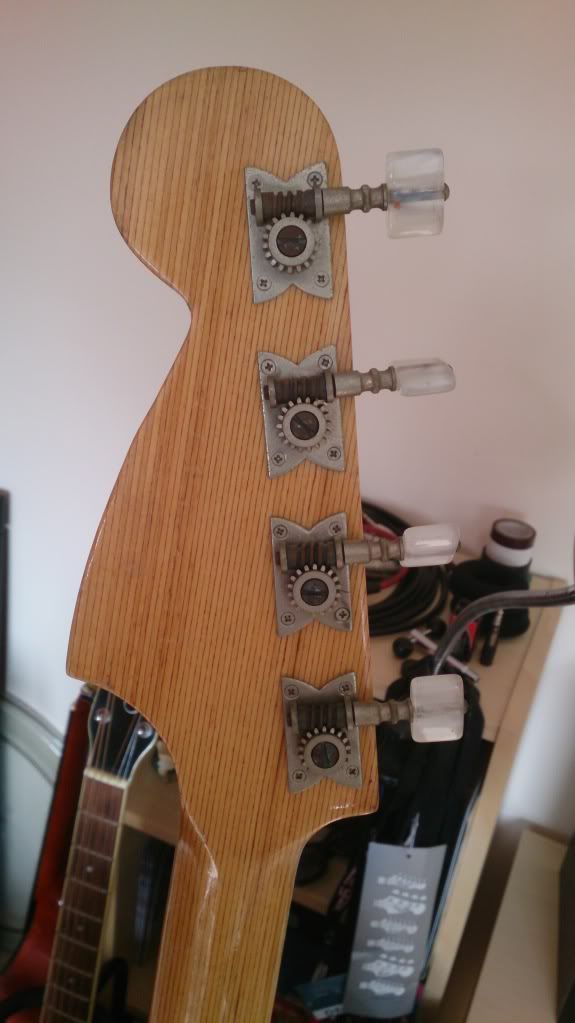
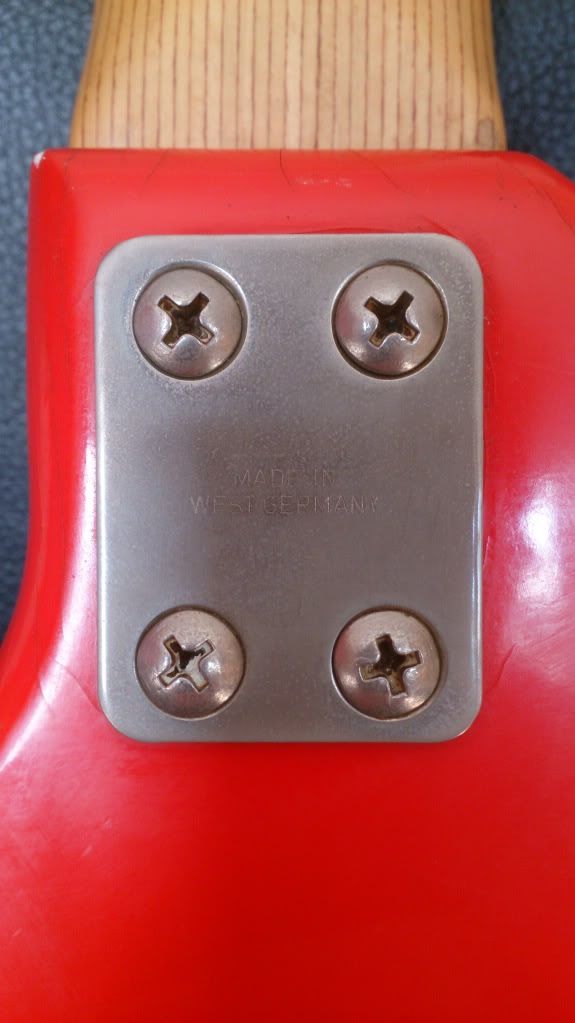
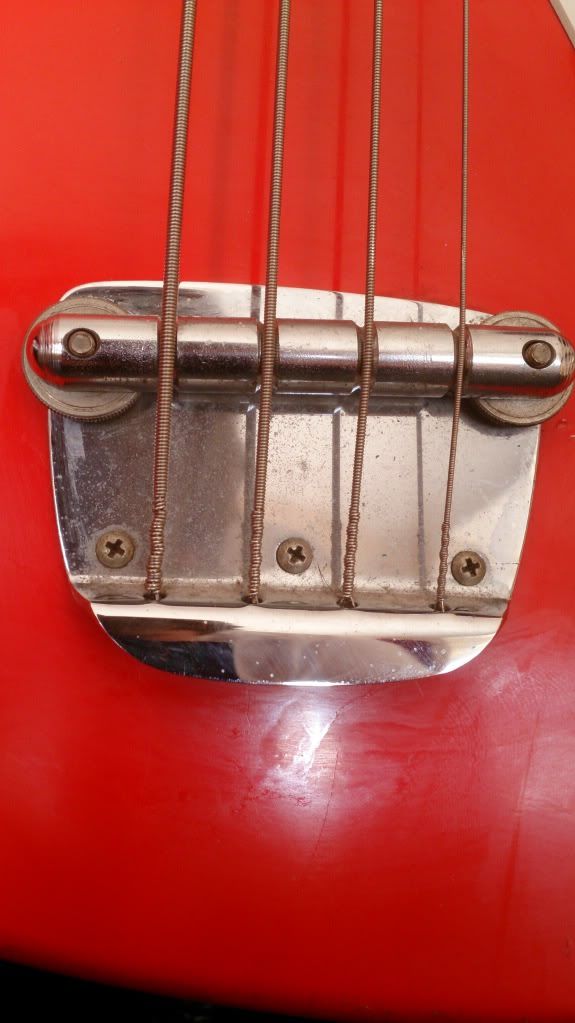
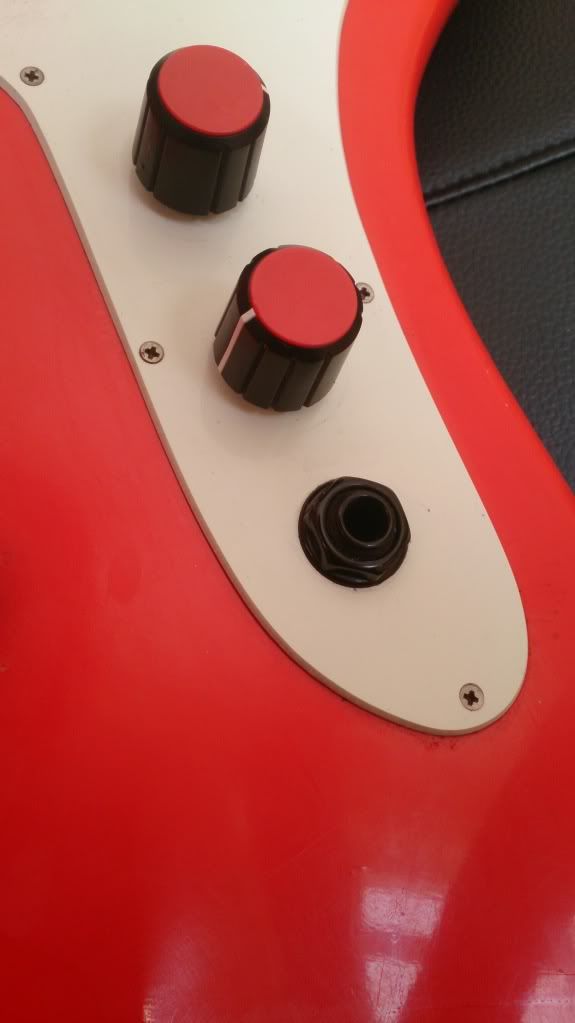
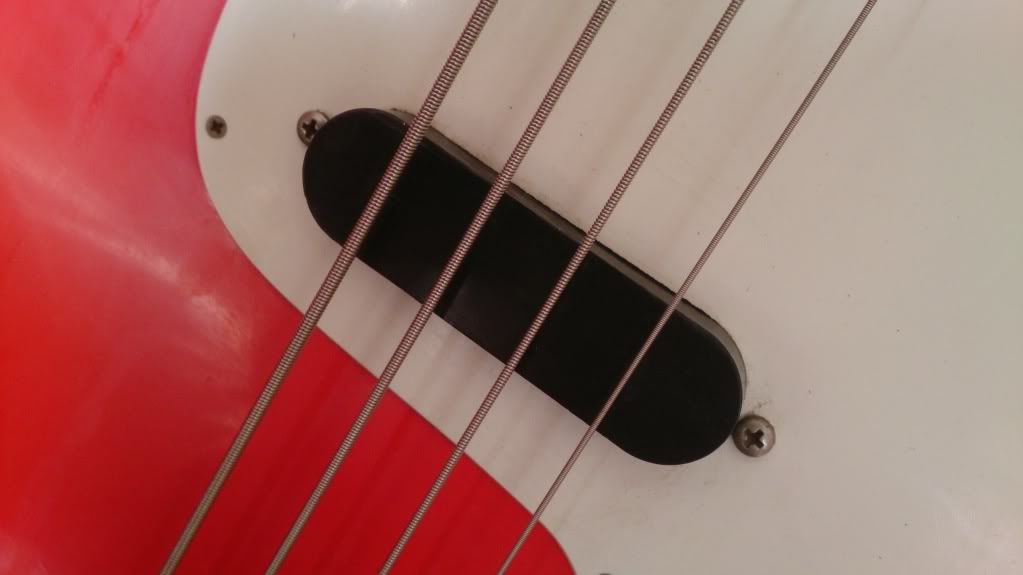
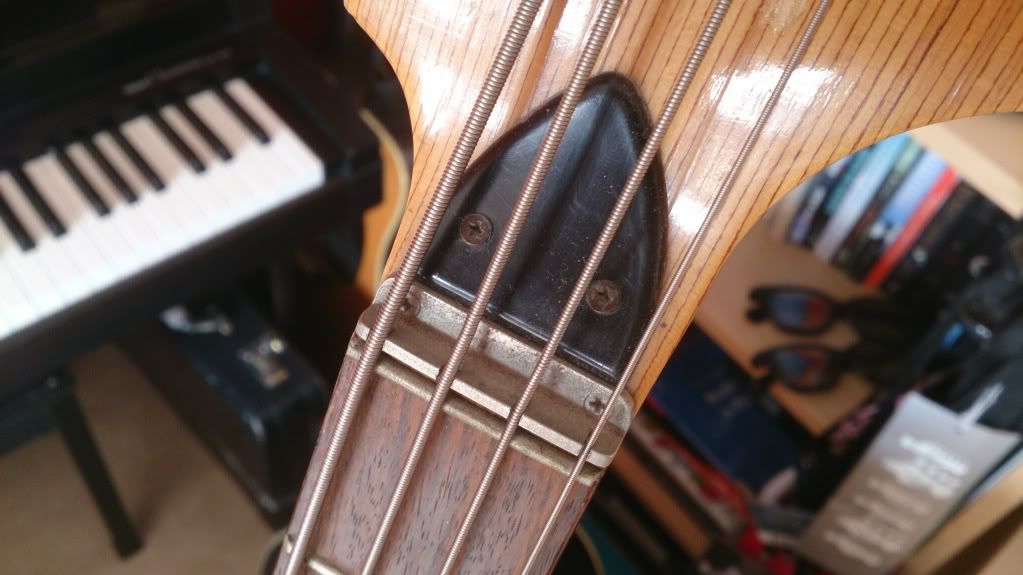
-
I don't think there's any tangible difference in set-up time. It doesn't take me much longer to connect a speak-on from my amp to my cab than it takes to run an XLR to a desk. In-fact arguably it'd take longer to set up a bigger PA and run a more complex monitor mix. My amp (Ampeg PF500) is smaller (or at least the same size) and much easier to use than a Pod. My cab (Barefaced Compact) weighs less than my bass in it's gigbag is is considerably smaller than the equivalent PA subs/monitors that would otherwise be required. Mainly though, my rig gives me the freedom to play in pretty much any venue (as long as there's electricity). In the bigger venues I play with big PA I will quite happily DI out/mic up and use my cab/in-ears for monitoring. In the smaller venues - pubs/outside marquees/rehearsal rooms with a small PA etc then my rig is required for obvious reasons. Either way with my set up I can get a consistent sound and adjust it easily with my amp/bass/fingers.
Most of the venues I play are fairly big and have a more than adequate PA to run bass through, but for everything else, which there is still a lot of, a Pod just won't cut it - ultimately for me it's just needlessly complicated in terms of programming (I run my amp generally flat and use my bass' pick-up configurations/tone controls/playing technique to change sound) and impractical in terms of the lack of an output of any actual sound.
I can appreciate that works for you but I'd seriously challenge you to try a rig for a while, maybe see if you can borrow something for a while, and see how you like it - just being able to walk into any old venue and gig in it with no hassle with a easily equalised quality sound that doesn't rely on the quality of a PA.
-
[quote name='RhysP' timestamp='1370701510' post='2104615']
I think that's it really - they're all too materialistic & money grabbing to give a f*** about anything else.
(Obviously that's a generalisation, but certainly the only thing the majority of them seem to do in Cardiff is shop & hang out in expensive coffee emporiums where they text each other instead of actually talking).
[/quote]
As a 19 year old, I think that's pretty much hitting the nail on the head. Most nowadays can get into uni, borrow a few grand on a student loan, have all the toys, go out every other night - general materialism, shallowness and apathy really. Some people communicate so much through texting and social media it's like they've forgotten how to hold an actual conversation.
Could do with a bit of a punk renaissance really! -
Thanks for all the replies guys, you rock

It sounds like it's probably that RFI in the air then, as the noise changes quite a bit as I turn/move around the stage. There's no noise when the lighting is turned on and using power (without the faders up, so not emitting any light).
I'm playing there tomorrow night so I'll try a few things out re power supply and chat to the bloke in charge of the lighting




Single power supply...and an option I've not come across before
in Effects
Posted
I power my entire pedalboard - TC Polytune, EHX Deluxe Big Muff, Tech 21 Red Ripper, Aguilar Octamizer and Tech 21 VT Bass Deluxe from this:

http://visualsound.net/1-spot-power-supply/
It plugs into my Polytune and I daisy-chain it off the Polytune's power output.